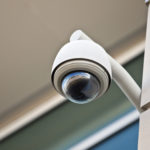IF YOU LIVE in Baltimore, you may have the feeling that you’re being watched. You are. Baltimore Police track your cellphone use without a warrant. They secretly film the entire city from the air. And as concerns about the uses and privacy implications of that next-generation surveillance tech have mounted, these domestic spying scandals also raise another question: Why Baltimore?
It turns out that Baltimore checks off all the requirements to build a modern American urban panopticon: High crime rates, racially biased policing, strained community-police relations, and lack of police oversight have turned Baltimore into a laboratory of emerging surveillance techniques.
The Spying
On August 23, Bloomberg exposed the details of an aerial surveillance program that Baltimore Police have been using to track cars and criminal suspects. A company called Persistent Surveillance Systems has been flying a Cessna over the city throughout 2016, totaling 300 hours of recorded, real-time video.
Meanwhile, an April appeals court upheld a lower-court decision that BPD can’t use stingray devices—tools that surveil calls and track cell phones by impersonating cell towers—without a warrant. It had been a common practice for the department.
And on August 16, the Center for Media Justice, ColorOfChange.org, and New America’s Open Technology Institute filed an FCC complaint alleging that BPD’s use of stingrays harms Baltimore’s citizens by causing interference on public radio spectrum without authorization. The complaint alleges that stingrays have been used so frequently that they reduce the availability of local cellular networks. “This interference with calls extends to emergency calls. In this way, these devices disrupt the cellular telephone network and emergency services,” the complaint reads. “Worse, the harms that stem from BPD’s use of CS simulator equipment fall disproportionately on Baltimore’s Black residents.”
Familiar Patterns
The tech may be relatively new, but its targeted use isn’t. Historically, intelligence-gathering and law enforcement agencies have disproportionately surveilled minority communities across the United States-–from COINTELPRO’s targeting of the Black Panthers to the FBI wiretapping and blackmailing Martin Luther King. “Like many areas that are under heavy surveillance and like the other communities where aerial surveillance has been tested, Baltimore has a large black population,” says Jay Stanley, a privacy expert at the American Civil Liberties Union. “The use of surveillance technologies selectively on communities of color is a time-honored police practice.”
The controversy around surveillance programs in Baltimore coincides with a larger discussion about the quality of policing. In the wake of Freddie Gray’s arrest and death from injuries suffered in police custody in April, protests escalated into riots on April 27. The Department of Justice, which declined to comment for this story, published an extensive evaluation of BPD earlier this month detailing excessive force, racially biased policing, and unconstitutional stops, searches, and arrests. Though the report doesn’t address persistent surveillance directly, its extensive reporting on BPD behavior “that violates the Constitution or federal law” hints at a police department that’s also willing to cross constitutional lines in the use of its growing surveillance toolkit. As the FCC complaint from last month notes, “Where BPD focuses its policing power, it also focuses its surveillance technology … and residents in targeted neighborhoods therefore suffer disproportionate harms.”
To continue reading click the source below:
Source: Wired
 IF YOU LIVE in Baltimore, you may have the feeling that you’re being watched. You are. Baltimore Police track your cellphone use without a warrant. They secretly film the entire city from the air. And as concerns about the uses and privacy implications of that next-generation surveillance tech have mounted, these domestic spying scandals also raise another question: Why Baltimore?
IF YOU LIVE in Baltimore, you may have the feeling that you’re being watched. You are. Baltimore Police track your cellphone use without a warrant. They secretly film the entire city from the air. And as concerns about the uses and privacy implications of that next-generation surveillance tech have mounted, these domestic spying scandals also raise another question: Why Baltimore?